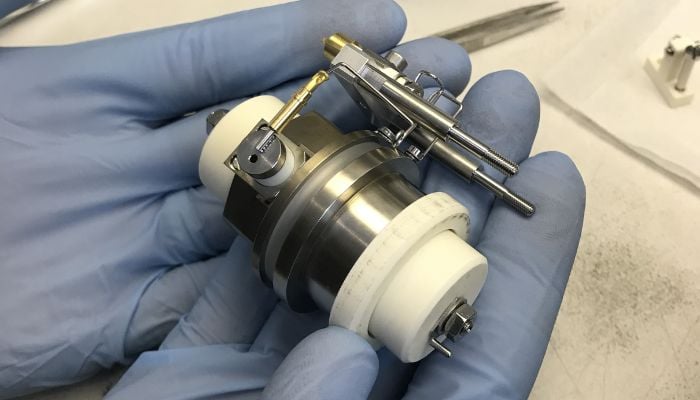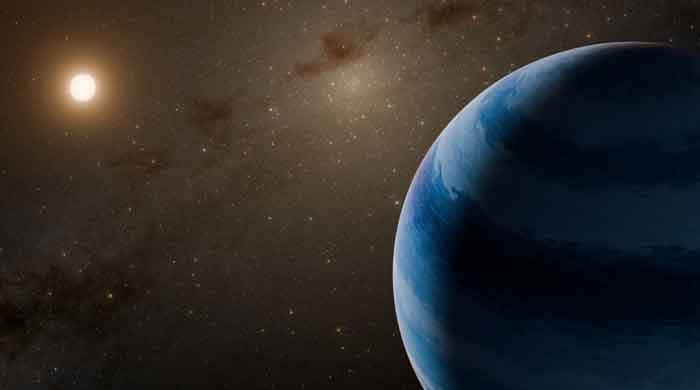Orbitrap: New alien detector is so small it fits in the hand
The technology offers same advantages as its larger predecessor while being more compact for upcoming space research missions
January 19, 2023

Scientists have created a laser system that can look for clues of extraterrestrial life on distant planets. The tiny device, which has been designed for National Aeronautics and Space Administration (NASA) space missions, has the potential to completely alter the way we look for extraterrestrial life.
According to a team from the University of Maryland, the gadget, described in the journal Nature Astronomy, is substantially more compact and resource-efficient than its predecessors while maintaining on-site examination of planetary samples and biological activity. The instrument is a scaled-down combination of two tools, weighing about 17 pounds.
Small amounts of material are removed by the pulsed ultraviolet laser. Then high-resolution information about their chemistry is provided using a scanner called "Orbitrap."
“The Orbitrap was originally built for commercial use,” said lead author Professor Ricardo Arevalo in a statement.
“You can find them in the labs of pharmaceutical, medical and proteomic industries. The one in my own lab is just under 400 pounds — so they’re quite large. It took us eight years to make a prototype that could be used efficiently in space — significantly smaller and less resource-intensive but still capable of cutting-edge science.”
The team's new device condenses the original Orbitrap and connects it to LDMS (laser desorption mass spectrometry). The scanning method has not yet been used in a planetary environment outside of our solar system.
The technology, says Arevalo, offers the same advantages as its larger ancestors while being more compact for upcoming space research missions and trips to distant planets. The Orbitrap LDMS sensor may be stored and maintained on a space probe's cargo easily due to its mass and low power needs.
Analysis of a planetary surface or substance is also considerably less invasive than present techniques, which reduces the likelihood of contamination or damage.
“The good thing about a laser source is anything that can be ionised can be analysed,” Arevalo continued.
We should be able to analyse the composition of the ice and detect biosignatures in it if we shine our laser beam on an ice sample. Because of the high accuracy and mass resolution of this technique, any molecules or chemical structures in a sample are much easier to identify.
Researchers may also access larger, more complex chemicals with a higher likelihood of being linked to life. Amino acids, for instance, are a good illustration of a more ambiguous living organism's signature.
“Amino acids can be produced abiotically, meaning that they’re not necessarily proof of life,” the researcher said.
Abiotic organics can be carried to the surface of a planet by meteorites, many of which are packed with amino acids. Arevalo said that researchers now understand that larger and more intricate molecules, such as proteins, are more likely to have originated from or be related to biological processes.
We can investigate larger, more complicated organic molecules with the laser, which can reflect biosignatures with more fidelity than smaller, easier chemicals.
Future explorations of the outer solar system will benefit from the understanding and adaptability provided by the small LDMS Orbitrap. These include programmes like the NASA Artemis Program and the Enceladus Orbilander that are centred on life detection goals and lunar surface exploration, respectively.











